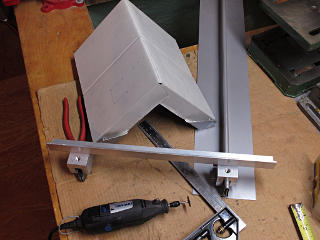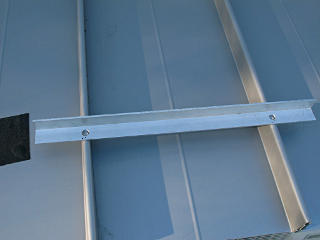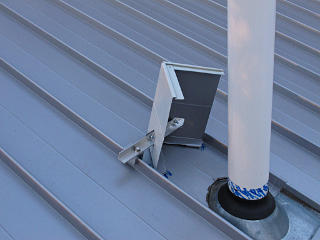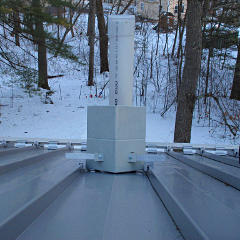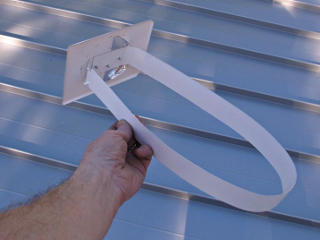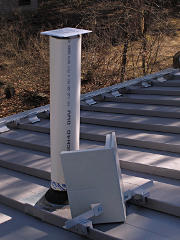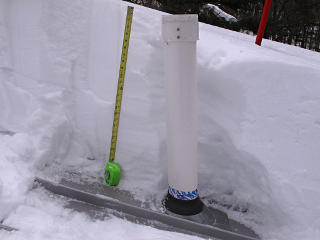
In thinking about a large snow pack sitting above the toilet vent, it's obvious that if the entire pack slid down against the pipe it could be a huge lever arm relative to the base and easily bend the whole thing over. There are numerous tales of this happening on metal roofs with penetrations, extreme enough in some cases to take out entire chimneys. What I nominally need is two more S-5! type clamps and a short piece of snow-rail or the like to bridge across the two roof seams just uphill of the vent stack. But maybe something a little taller and more clever would give better protection.

